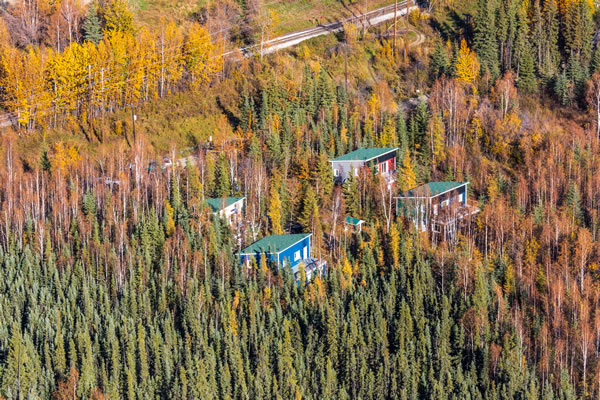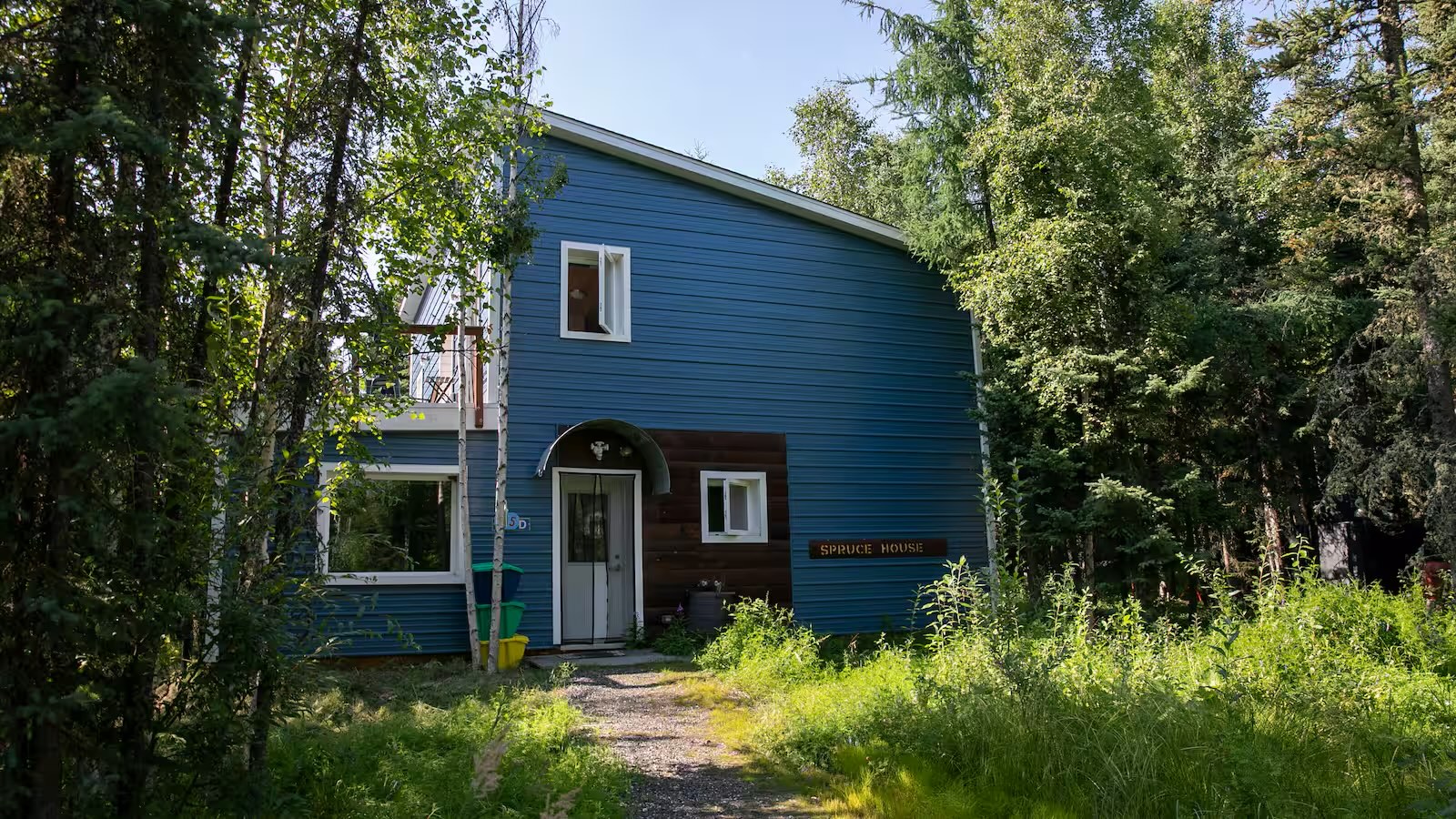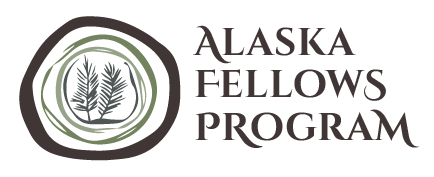Locations
Sitka
Welcome to Sitka, the original AFP site! You are entering one of the most spectacular places on Earth. Sitka is full of wildlife, nature, and also a pretty remarkable community. You’re going to watch the strange phenomenon of salmon fighting their way up their natal streams to spawn; you’ll learn to spot alpine blueberries nestled in mats of moss up on Gavan Hill; and you’ll see the Northern Lights one night from your campsite, all of a sudden when you’re not expecting them. You will almost certainly attend a Halloween lip sync and costume contest with at least three generations of Sitkans, eat traditional foods at a potluck, and hear endless stories from native Sitkans.
The world is your oyster in Sitka – or rather, your Pacific blue mussel, since oysters don’t grow well in Southeast. You’ll have excellent luck adventuring if you tell people what you’re looking for. Want to learn to fish? Find someone wearing Grundens and tell them you want to go. Wondering how to make your own sourdough? Start asking around – you’re likely to end up with a starter with a centuries-old history and a recipe for sourdough pancakes. Same goes for material things – someone in Sitka has a wetsuit they’ll lend you when you want to go snorkeling in December, and their friend has a kayak that you can borrow for that trip to Salmon Lake next weekend.
Because it’s a temperate rainforest, it rains a lot! In Southeast Alaska, precipitation doesn’t stop us from getting outside. With the right gear, you can go anywhere. The rain is also why we have magnificent old-growth forests and 20+ species of sphagnum moss carpeting the ground, and it makes for some magical misty mornings across the sound.
It also gets dark in the winter! On the winter solstice, we have about 7 hours of daylight –from 8:30 am to 3:30 pm. The downside of that is that you might be hiking in the dark, and you’ll probably want to pop a Vitamin D pill in the morning. The upsides are that you will probably get to see the sunrise as you walk to work, and you’ll have lots of chances for bonfires. And the trade-off for winter darkness is hours of summer sun after dinnertime—by May, you’ll be yawning before the sun sets.
You have the next nine months – or more, if you stay – to make Sitka your own. Take the opportunity to explore the history and nature of Sitka and to make meaningful connections in the community. We think Sitka is a pretty special place.
Sitka has one house for all 7 fellows!
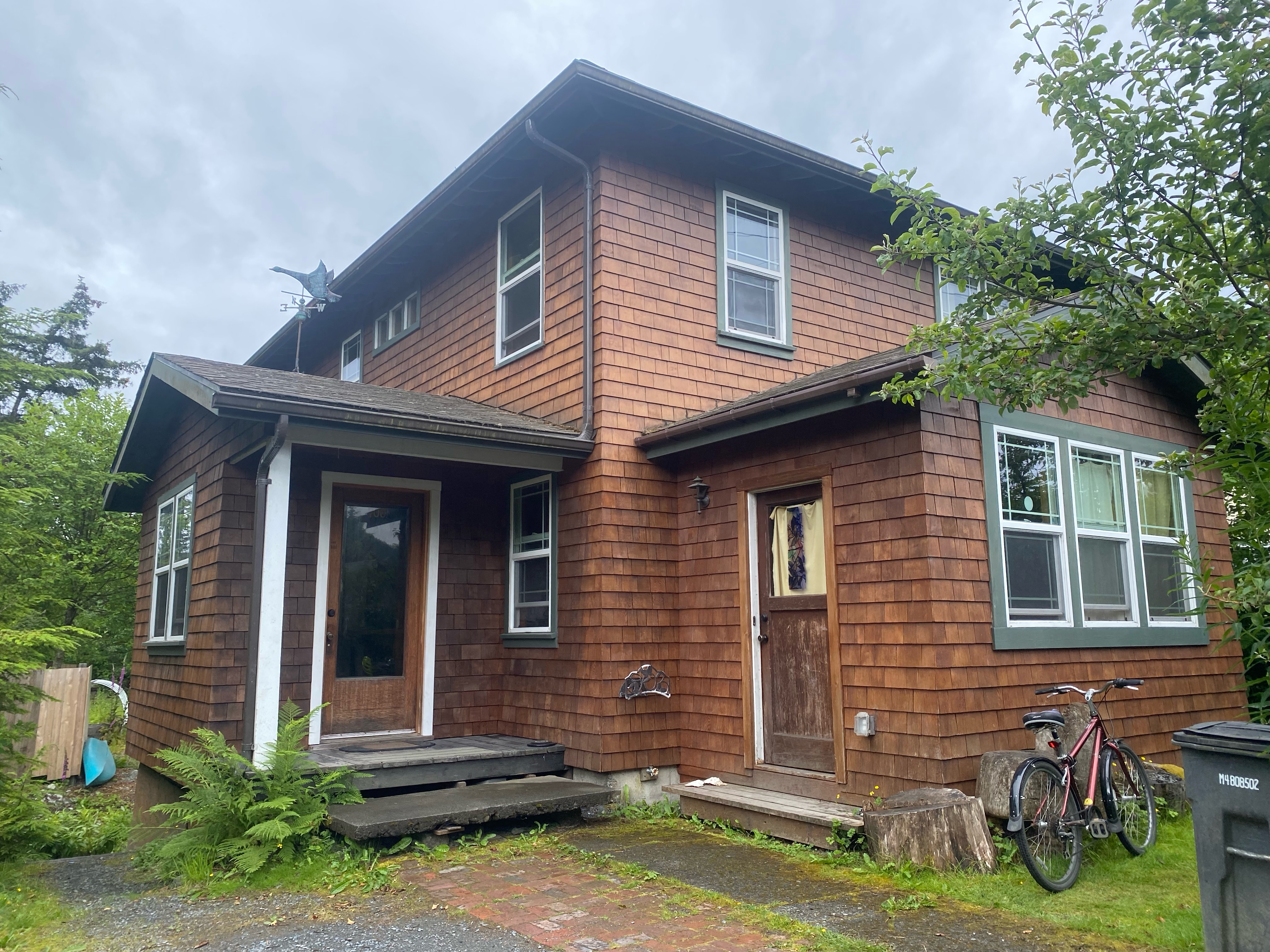
Juneau
Juneau is a small, remote capital city located in the vast archipelago of Southeast Alaska, a land of islands, valleys, and fjords carved by glaciers.
With no roads in or out, people usually arrive by boats or planes. But it’s an adventurous community, and once in a while, a brave soul will arrive via a swim up the channel or a bicycle across the ice field.
Juneau is a blue dot in a red state, and our identity is defined by many overlapping and intertwining cultural groups.
There’s a strong sense of Alaska Native culture, not just history, but living, breathing, contemporary culture. Work cultures emerge from sectors like mining, fishing, government, and nonprofits. There are strong arts and activism scenes, burlesque, brewing, skiing and many outdoor adventures to be had.
All of these groups and activities overlap, intermingle and co-exist in a messy, cautious, blundering, familial dance of small-town necessity. Sometimes polite and at other times contentious, we ultimately manage to get along and look out for one another despite our differences.
Juneau has a distinctly seasonal life cycle. The political season starts our year off in mid-January after the glow of the holidays fades. It can be bitter but also cerebral and engaging. The days are getting longer and spring is on the horizon.
Spring is a joyful time when there’s a nice bustle to town. Shop owners prepare for the oncoming tourist season and the town starts filling up with new faces.
In summer everyone is going full throttle trying to make a buck, catch a fish, or scramble to the top of a mountain. It’s a time for weddings, adventures and long days.
In the fall, the rain and dark days get more frequent. Depression isn’t uncommon and snowbirds start leaving town. Late September through mid-December is a bit dead. During this time, people find tight-knit friend groups to spend time with indoors or courageous communities that are excited to take on the ski season despite the increasing darkness. It’s a time to look out for each other and yourself. The soup season.
Juneau has a surprising number of people experiencing homelessness for such an unforgiving climate. We’ve made strides with a new Housing First facility but have a long way to go. Some of our social problems stem from alcoholism and substance abuse disorders rooted in a history of colonialism. We’ve also seen increased criminal activity over the past several years as a result of residents struggling with opioid addiction.
Wandering around downtown, you’re just as likely to bump into a legislator as a fisherman, and they’ll probably be wearing the same rain boots. People in Juneau are generally approachable and especially helpful if you let them know you’re new to town.
Juneau has two houses for 6 fellows. The houses are called Felix (L) and Oscar(R) after the odd couple.
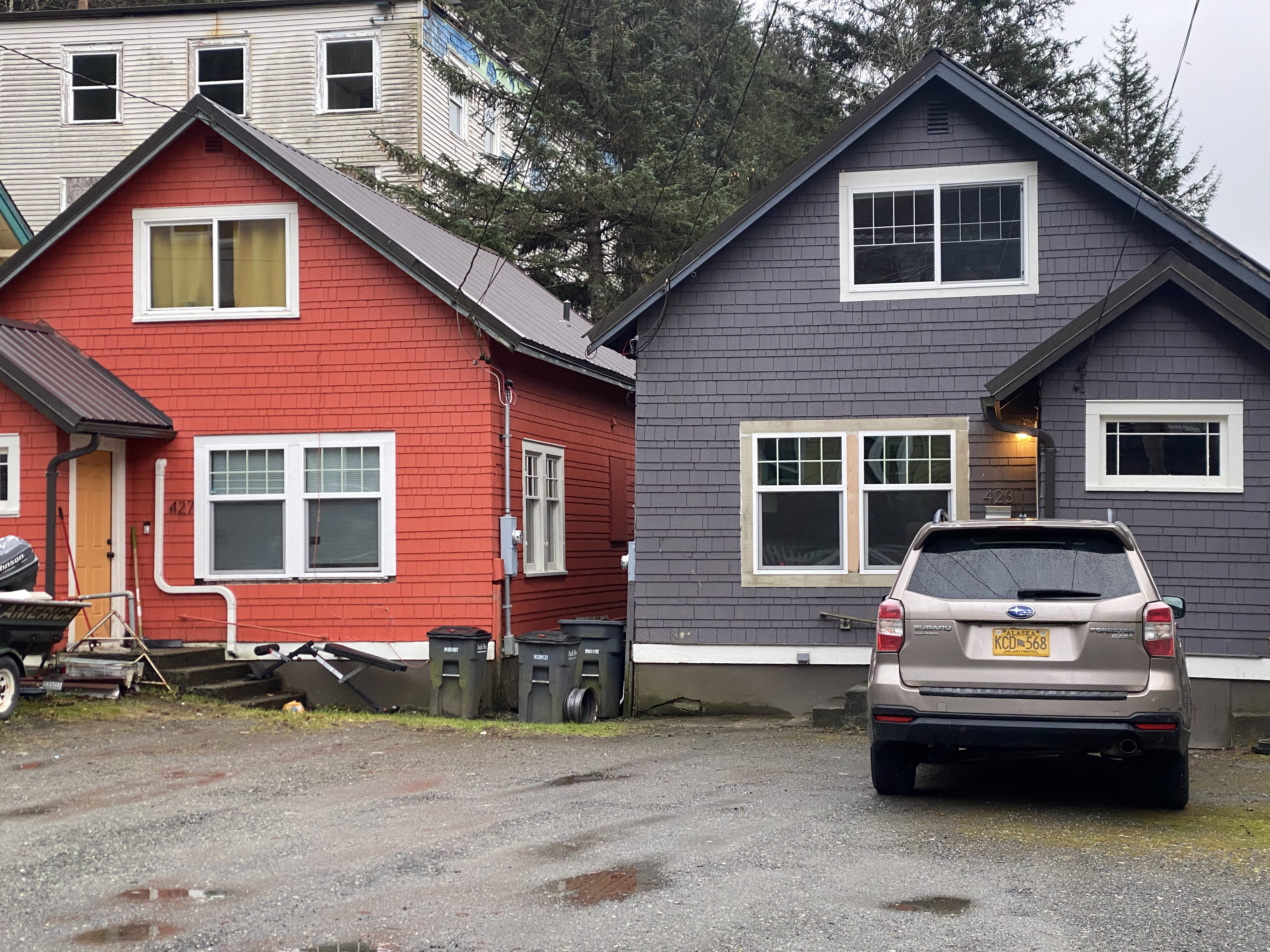
Anchorage
Welcome to Anchorage! Anchorage is the urban heart of Alaska and it’s going to be a wonderful new home for you.
Anchorage is the biggest city in Alaska; it has 40% of the population with a population of about 300,000. It’s also a little town, or “big city, small town,” as Alaskans like to say. Both are true. You can expect to run into people you meet again and again, and be forewarned to never gossip loudly in public. You can also take advantage of the luxuries of a city, like city events and restaurants and (limited) public transportation! And, of course, with a short drive you can escape the big-little-city to feel like you’re in the middle of wilderness paradise at the summit of one of the mountains in the Chugach or in Kincaid Park watching the ice flow.
You live close to downtown, which is fabulous and offers lots to explore, but it’s not the extent of Anchorage. The municipality spreads all the way to Eagle River (and down to Girdwood) and encompasses Chugach State Park, as well as the neighborhood with the most diverse census tract in the country, Mountain View. Don’t let the neighborhoods and city sprawl fool you — you’re still in Alaska. Things like office banter about hunting and moose sightings in the Mayor’s yard are frequent. It’s a city, Alaska style.
Most days, you’ll be able to see the Chugach Mountain range to the east, possibly one of the most stunning sights that you’ll ever grow accustomed to—in the fall you can see the “termination dust” creeping down the mountain hailing the end of summer, and in the winter you can see the sunrise behind the mountains every day around 10am. When it’s super clear, you can look to the west to see Denali and marvel at “The Bowl” that you live in.
If you’re not already, you’ll get used to snow, and ice, and traveling about with both of these on the ground. Anchorage doesn’t plow like most cities, and you’ll likely be involved in many an argument about snow tires versus roughing it. Take it in Alaskan style — travel carefully, get used to sliding, and you’ll be fine! (**22-23 cohort says put those snow tires on 🙂, seconded by 23-24 cohort)
Anchorage has 3 different houses for the 11 fellows, Balchen (pic 1), Virginia Court (pic 2), 15th Ave (pic 3).

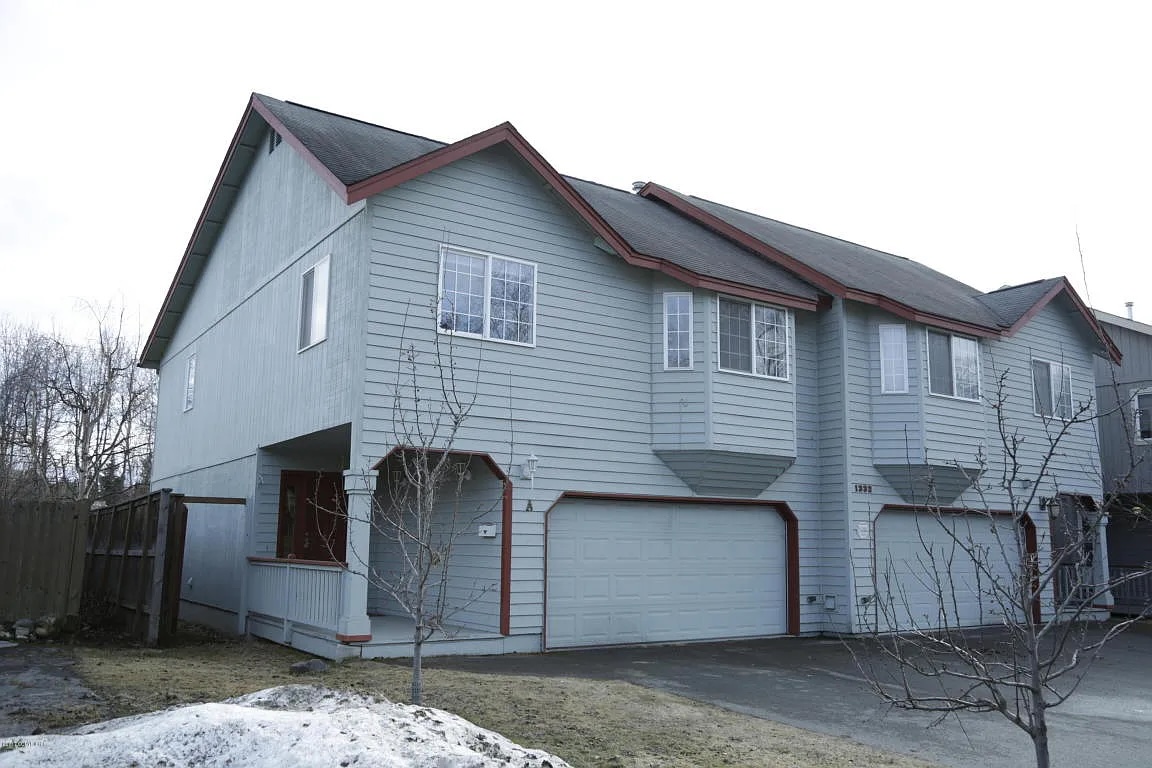

Fairbanks
Welcome to Fairbanks! Fairbanks is the “Golden Heart” of Alaska, and it’s going to be a wonderful new home for you.
Fairbanks has a population of about 30,000 within city limites but a total of 70-80,000 in the broader North Star Borough, making it one of the top three population centers in Alaska. Fairbanks has a fantastic arts scene and a lot of “urban amenities” for Alaska (read: a Costco), but also boasts impressive access to Alaska’s wilderness.
If you’re new to Fairbanks, the winter will be an adjustment. You’ll get used to plugging in your car, planning your workday so that you can get outside during daylight hours, and pumping the brakes when driving on snow.
You’ll also have some wonderful new things to look forward to: Fairbanks in winter is one giant snowflake where everything glitters, and it has pretty spectacular Northern lights (nothing like the city view from Anchorage). Other perks of a Fairbanks winter? There’s a world-renowned ice-carving festival, Chena Hot Springs in the winter is magical, and there’s some pretty amazing cross country skiing — don’t forget your skis!
Fairbanks has 3 houses for the 10 fellows. The houses are named Spruce (blue) and Tamarack (red) and Birch (not pictured) . The houses are collectively called the Sustainable Village.
Read more about the houses HERE
